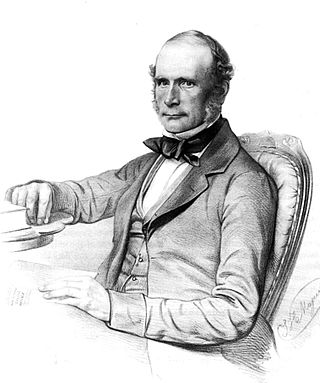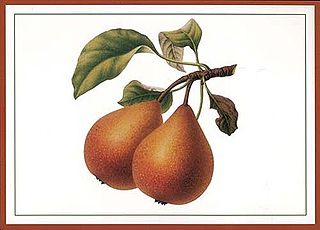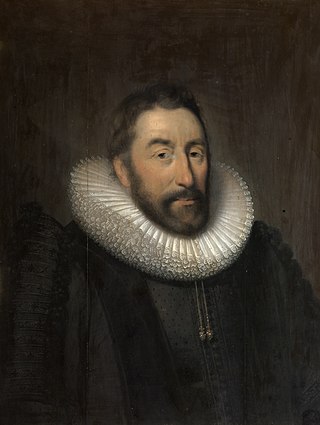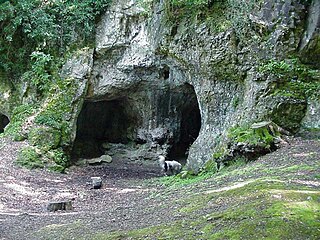
Mycology is the branch of biology concerned with the study of fungi, including their genetic and biochemical properties, their taxonomy and their use to humans, including as a source for tinder, traditional medicine, food, and entheogens, as well as their dangers, such as toxicity or infection.

Lady Godiva, in Old English Godgifu, was a late Anglo-Saxon noblewoman who is relatively well documented as the wife of Leofric, Earl of Mercia, and a patron of various churches and monasteries. Today, she is mainly remembered for a legend dating back to at least the 13th century, in which she rode naked – covered only in her long hair – through the streets of Coventry to gain a remission of the oppressive taxation that her husband, Leofric, imposed on his tenants. The name "Peeping Tom" for a voyeur originates from later versions of this legend, in which a man named Thomas watched her ride and was struck blind or dead.

Hugh Edwin Strickland was an English geologist, ornithologist, naturalist and systematist. Through the British Association, he proposed a series of rules for the nomenclature of organisms in zoology, known as the Strickland Code, that was a precursor of later codes for nomenclature.
The Wenlock Group (Wenlockian), in geology, is the middle series of strata in the Silurian of Great Britain. This group in the typical area in the Welsh border counties contains the following formations: Much Wenlock Limestone Formation, 90–300 ft.; Wenlock Shale, up to 1900 ft.; Woolhope or Barr Limestone and shale, 150 ft.
Woolhope is a village and civil parish in the English county of Herefordshire. The population of the civil parish was 486 at the 2011 census. The civil parish includes the hamlet of Broadmoor Common to the west of the village, and a locale known as The Nurdens also known as Upper Woolhope to its northeast.

The Herefordshire Pomona is a 19th-century catalogue of the apples and pears that were grown in the county of Herefordshire in England. It was one of the first attempts to fully catalogue the existing varieties of English fruit and has been called "a classic of late Victorian natural history". Only 600 copies were ever printed and originals now fetch high prices whenever they are sold.
Angela Rosemary Tooby-Smith is a British former long-distance runner. She won a silver medal behind Ingrid Kristiansen at the 1988 IAAF World Cross Country Championships and a bronze medal in the 10,000 metres at the 1986 Commonwealth Games. She also finished ninth in the 10,000 metres final at the 1987 World Championships and competed at the 1988 Seoul Olympics. She is the twin sister of fellow athlete Susan Tooby.
The Woolhope Naturalists' Field Club is a society devoted to the natural history, geology, archaeology, and history of Herefordshire, England. Founded in 1851, it has had many notable members and played an important early role in the history of mycology in Britain.
Susan Julia Wightman is a retired long-distance runner from Great Britain. Representing Wales, she finished sixth in the 10,000 metres at the 1986 Commonwealth Games. She set her personal best of 2:31:33 in the marathon, when finishing 12th at the 1988 Seoul Olympics. At the 1988 Great North Run, she became the first British woman to run a sub-70-minute half-marathon, running 69:46 to finish second behind Greta Waitz. This would stand as the UK record until 1991 when Liz McColgan ran 69:15.
Kilpeck Priory was a Benedictine priory in Kilpeck, Herefordshire, England, at grid reference SO448303.

Sir Walter Pye of The Mynde, Herefordshire was an English barrister, courtier, administrator and politician who sat in the House of Commons from 1621 and 1629.

Pen-y-Clawdd Court is a Grade I listed country house in Llanvihangel Crucorney, Monmouthshire, Wales, situated 1 mile (1.6 km) to the southwest of the village off the A465 road. It is a Tudor manor house, which lies within the bailey of what was Penyclawdd Castle, and is thought to date from circa 1625.

Llanrothal is a small village and historical parish in Herefordshire, England in the Monnow Valley, on the border with Monmouthshire, Wales. The River Monnow flows near here along the border. The village is located 5 miles by road northwest of Monmouth. It contains a 12th-century church, St John the Baptist's which stands in a remote position close to the England–Wales border overlooking the river.

King Arthur's Cave is a limestone cave at the foot of a low cliff at the north-western end of Lord's Wood in The Doward, near Symonds Yat, Herefordshire, about four miles northeast of Monmouth, in the Wye Valley. The cave entrance lies about 285 feet above the River Wye on a hill, with a double interconnected entrance and two main chambers. It is protected as a nature reserve under the Herefordshire Nature Trust. There is evidence that the cave was occupied by man during the Upper Palaeolithic era, and flint tools and woolly mammoth bones have been unearthed within and around the caves.
Hope is a late oil painting by the Pre-Raphaelite artist Edward Burne-Jones. It was painted on commission for Mrs. George Marston Whitin of Whitinsville, Massachusetts in 1896.

Robert Lightbody was a British amateur geologist and member of the Ludlow Natural History Society.
Michelin is a variety of cider apple commonly grown in commercial orchards in the United Kingdom, although originating in France.

Putley is a village and civil parish 8 miles (13 km) east of Hereford, in the county of Herefordshire, England. In 2011 the parish had a population of 245. The parish borders Aylton, Woolhope, Pixley, Much Marcle and Tarrington.

Sollers Hope or Sollershope is a village and civil parish 8 miles (13 km) south east of Hereford, in the county of Herefordshire, England. In 2001 the parish had a population of 68. The parish touches Brockhampton, How Caple, Much Marcle, Woolhope and Yatton. Sollers Hope shares a parish council with How Caple and Yatton called "How Caple Sollershope and Yatton Group Parish Council".
Eleanora Armitage was a British bryologist who was a founding member of the Moss Exchange Club, the British Ecological Society and the British Bryological Society and served as president of the later organisation in 1939. She was an accomplished collector and her herbarium is now held at Bristol Museum. She was also a member of the British Association for the Advancement of Science as well as the Royal Horticultural Society.